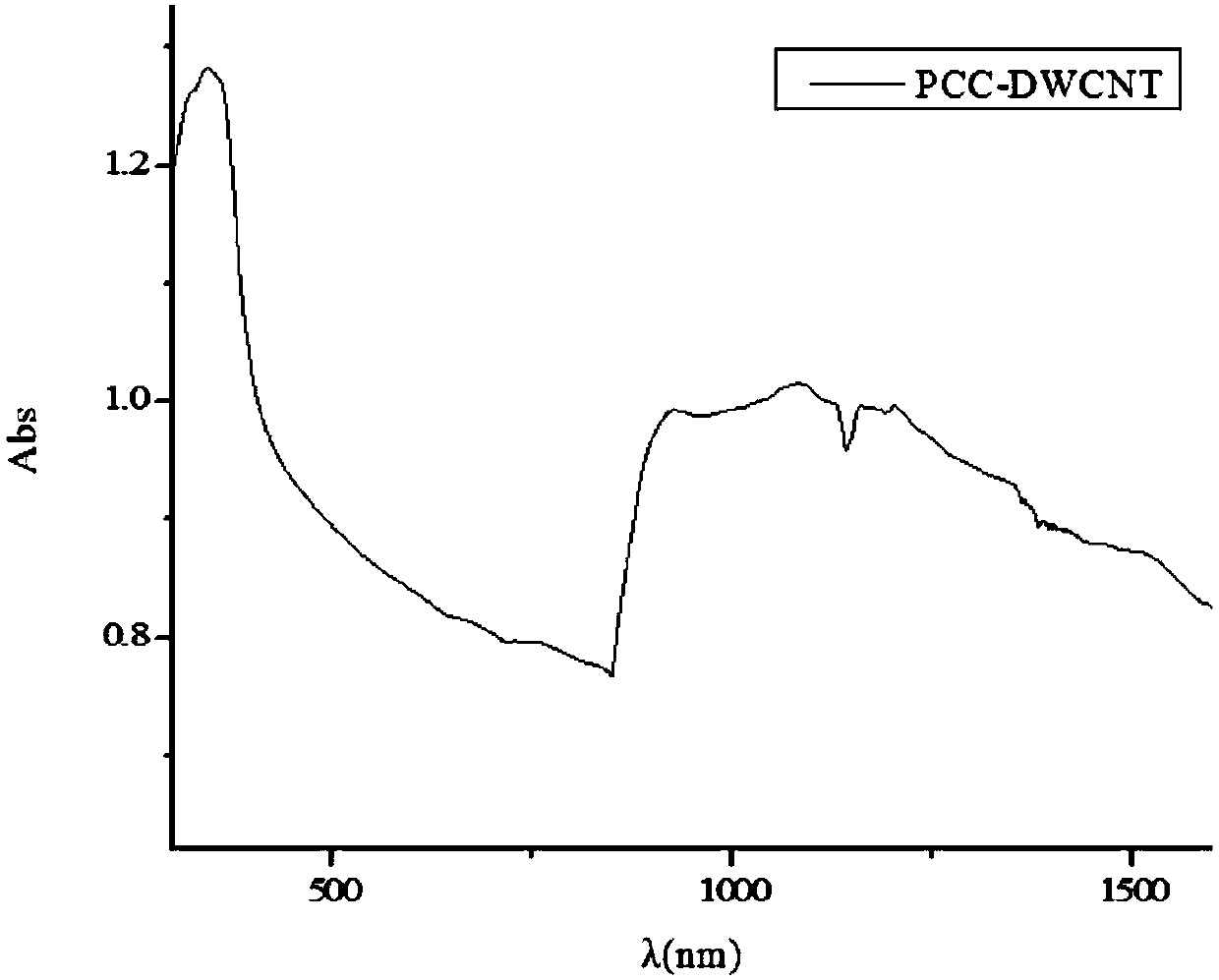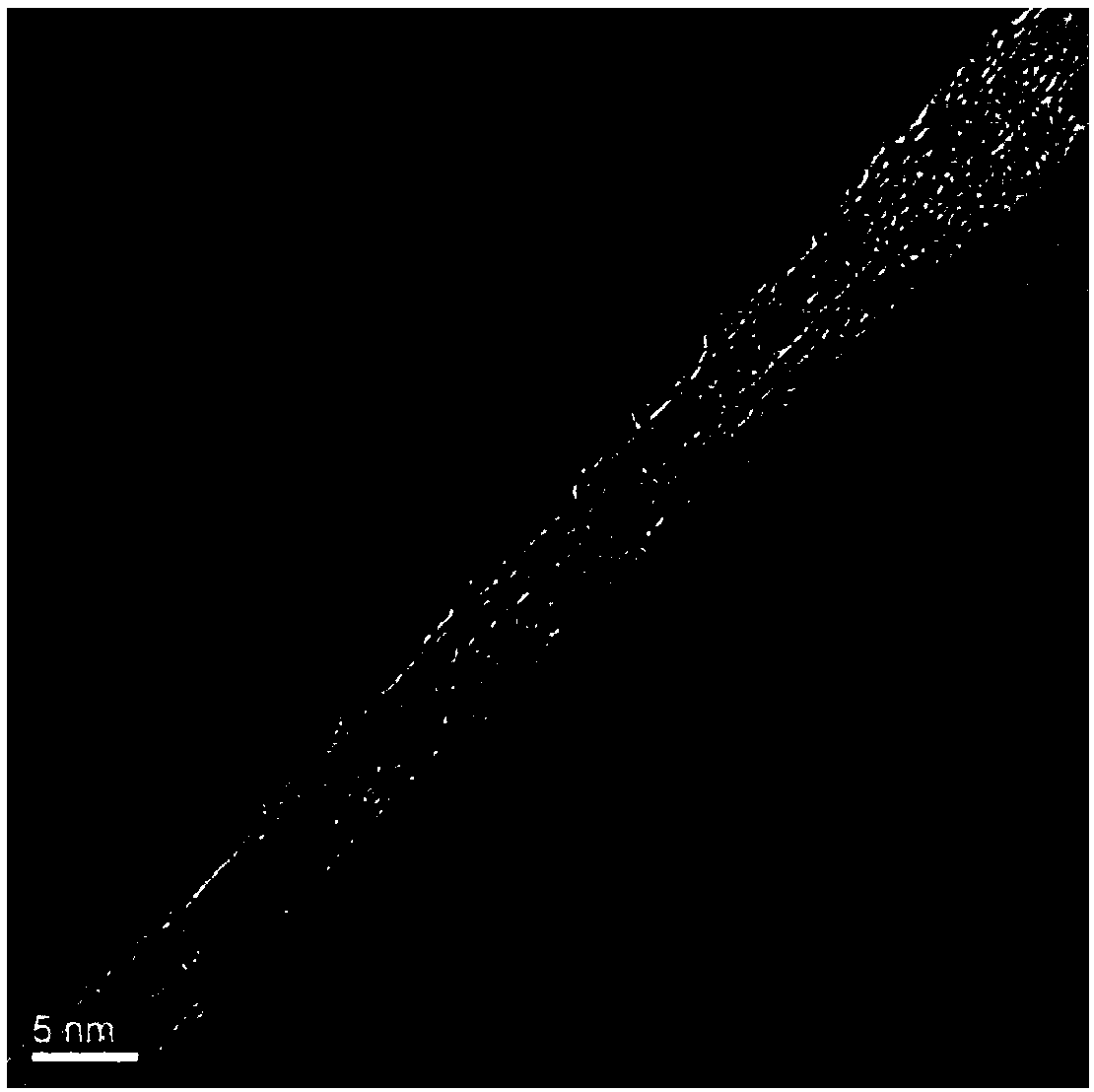Carbon nanotube dispersant and dispersion method based on carbazolyl conjugated polymer
A technology of conjugated polymers and carbon nanotubes, which is used in the field of carbon nanotube dispersants based on carbazole-based conjugated polymers, the dispersion of double-walled carbon nanotubes, and the monodispersion of carbon nanotubes. Water surface tension is high, easy to deactivate and other problems, to achieve the effect of good conductivity and excellent conductivity
- Summary
- Abstract
- Description
- Claims
- Application Information
AI Technical Summary
Problems solved by technology
Method used
Image
Examples
preparation example Construction
[0061] More specifically, for example, a typical synthesis method of carbazole-based conjugated polymers includes: making 3,6-dibromocarbazole and 2,7-boronate carbazole undergo a Suzuki coupling reaction to obtain the Carbazole-based conjugated polymers.
[0062] Further, the synthesis method may include:
[0063] Take 3,6-dibromocarbazole, 2,7-boronate carbazole and the catalyst and mix them uniformly in an organic solvent, then add saturated potassium carbonate solution to form a mixed reaction system;
[0064] The mixed reaction system is frozen and solidified, and vacuumized to degas, then the mixed reaction system is returned to room temperature, and heated to reflux for reaction, and then the formed reaction mixture is post-treated to obtain the carbazole-based conjugated polymer.
[0065] Further, the organic solvent includes tetrahydrofuran, but is not limited thereto.
[0066] Further, the catalyst includes tetrakis(triphenylphosphine)palladium, but is not limited...
Embodiment 1
[0077] Embodiment 1: Please refer to the following formula showing a synthesis principle of a carbazole-based conjugated polymer (PCC) in a typical embodiment of the present invention.
[0078]
[0079] Concrete, the synthetic technique of aforementioned carbazole-based conjugated polymer (PCC) comprises the following steps:
[0080] a. Weigh 0.2g~1.3g 3,6-dibromocarbazole and 0.1g~0.5g 2,7-boronate carbazole as two polymerization reaction monomers and an appropriate amount of catalyst tetrakis(triphenylphosphine) palladium into two ports In the round bottom flask, add 15mL THF (tetrahydrofuran), stir magnetically until dissolved, then add 10mL saturated potassium carbonate solution, then freeze the reaction flask with liquid nitrogen, make the reaction system completely solidified, and then vacuumize and degas for 30min;
[0081] b. Remove the liquid nitrogen, and after the reaction system returns to room temperature, heat it to 70°C with a silicone oil bath and reflux for...
Embodiment 2
[0100] Example 2: Referring to Example 1, but using commercially available single-walled carbon nanotubes (about 0.8 nm to 1.2 nm in diameter) instead of the former double-walled carbon nanotubes to obtain a single-walled carbon nanotube dispersion (PCC-SWCNT). refer to Figure 6 is the near-infrared-visible-ultraviolet absorption spectrum of the single-walled carbon nanotube dispersion. It can be seen that PCC also has a good dispersion ability for single-walled carbon nanotubes. Then referring to Example 1, a thin film was made from the double-walled carbon nanotube dispersion, and the resistivity of the thin film was tested. It can be found that the thin film still maintains good electrical conductivity.
PUM
| Property | Measurement | Unit |
|---|---|---|
| Outer diameter | aaaaa | aaaaa |
| Resistivity | aaaaa | aaaaa |
| Resistance | aaaaa | aaaaa |
Abstract
Description
Claims
Application Information
 Login to View More
Login to View More - R&D
- Intellectual Property
- Life Sciences
- Materials
- Tech Scout
- Unparalleled Data Quality
- Higher Quality Content
- 60% Fewer Hallucinations
Browse by: Latest US Patents, China's latest patents, Technical Efficacy Thesaurus, Application Domain, Technology Topic, Popular Technical Reports.
© 2025 PatSnap. All rights reserved.Legal|Privacy policy|Modern Slavery Act Transparency Statement|Sitemap|About US| Contact US: help@patsnap.com



